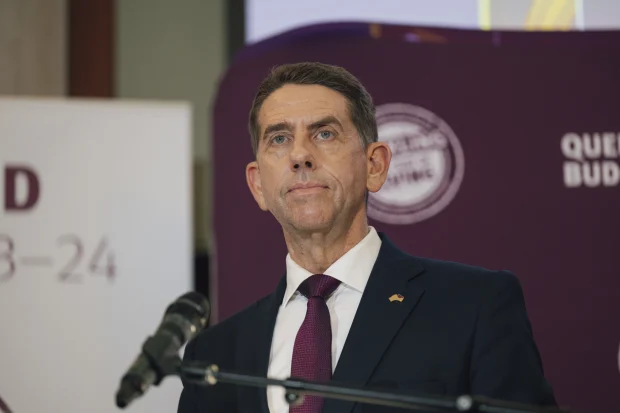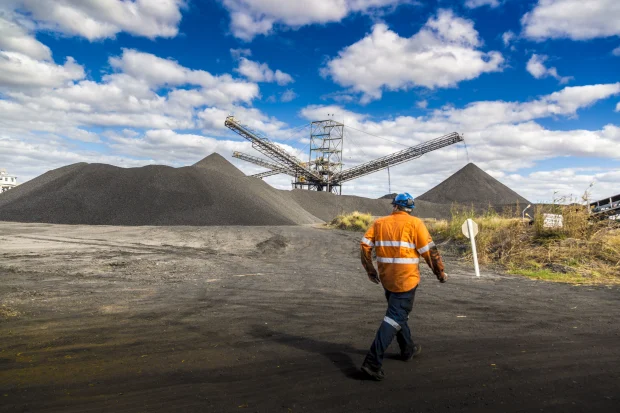23-Aug-2023: BHP's Henry responds to Dick move (MiningNews.net)
BHP chief Mike Henry says it will steer clear of new investment in Queensland after Treasurer Cameron Dick threatened to cancel leases (afr.com)
BHP's response to Queensland lease questions (australianmining.com.au)
Queensland asks BHP to invest in state or risk licence cancellation (mining-technology.com)
From the AFR article (link above - 2nd one from top):
BHP to steer clear of new investment in Queensland
BHP chief executive Mike Henry said the global miner would not make any new greenfield investment in Queensland after the state’s controversial new coal royalty regime made it too risky to invest.
While Treasurer Cameron Dick has threatened to cancel BHP’s mining leases in Queensland unless it continued to invest in the state, the BHP boss acknowledged the company would continue to expand its existing operations to take advantage of strong metallurgical coal prices.

Queensland Treasurer Cameron Dick said mining leases would be cancelled if not used. Photo credit: Jamila Toderas
The Labor government and the mining giant have been locked in a war of words since Mr Dick blindsided the resources sector when he introduced three new tiers of coal royalties in July last year.
BHP is in the process of selling two of its Queensland mines, Daunia and Blackwater, but has kept its most valuable coking coal mines, including Goonyella, Riverside, Peak Downs and Saraji.
Mr Henry said the challenge remained that Queensland’s royalty regime, which required BHP to pay another $700 million last financial year, made other states or countries a better investment destination.
“I don’t think we are saying anything particularly controversial; lower returns, higher risk means other investments become more attractive,” he said after BHP released its results on Tuesday.
“The only thing I would note is we are continuing to invest in these Queensland businesses. BMA [BHP Mitsubishi Alliance] is investing over a billion dollars a year in keeping these operations going because we do see the business as attractive.”
In its statement to the ASX, BHP said the coal royalty hikes had negatively impacted the “investment economics” of Queensland and increased sovereign risk.
“We will not be investing in any further growth in Queensland; however, we will sustain and optimise our existing operations,” it said.
Mr Dick continued his attack on the global miner on Tuesday, saying the Palaszczuk government would follow through with its threat if BHP did not complete its promised investments in Queensland.
He said BHP’s bumper profit of $13.4 billion showed the company had the resources to deliver on its mining leases.
“For all the complaints about progressive coal royalties, for coal, BHP’s underlying return on capital employed came in at a very healthy 47 per cent,” Mr Dick told state parliament.

Queensland coal royalties delivered $15 billion into state coffers last financial year. Photo credit: Glenn Hunt
“The strength of BHP’s balance sheet and the impending windfall it will make from selling the Daunia and Blackwater mines shows just what BHP can achieve when it focuses on its core business.”
Mr Dick said BHP even acknowledged the new royalty regime may push up prices, which means more profits in the future.
But he warned that the Labor government expected big miners to follow through on promised investments or they could face financial penalties or have their leases cancelled.
“We want those companies to properly develop the leases that they have been granted by the people of Queensland. If they fail to do so without legitimate commercial reason, our government has the power to act,” Mr Dick said.
The new system introduces three tiers: a royalty rate of 20 per cent for prices above $175 a tonne, 30 per cent for prices above $225 a tonne and 40 per cent for prices above $300 a tonne.
The new tiers gave Queensland the highest-taxing royalty rate in the world and delivered a staggering $15 billion in coal royalties last financial year.
Queensland Resources Council chief executive Ian Macfarlane, who has vowed to fight the state’s coal royalty regime up to next year’s election, said Mr Dick’s latest threat to cancel BHP’s leases would further shake investor confidence in the state.
“We shouldn’t take for granted that Queensland will always have a strong resources sector to rely on if policies are introduced which make us less competitive and less attractive to investors,” Mr Macfarlane said.
“All Queenslanders will lose out if resources companies move their focus to mining projects in other states and countries because of growing uncertainty about the Queensland government’s attitude towards the mining sector.”
--- end of excerpt ---
Further Reading: BHP looks past China’s property woes to mining’s brave new world (afr.com)
Disclosure: I do not currently hold any BHP shares, however I do hold South32 (S32) shares IRL and they own the Cannington Silver/Lead/Zinc mine in Queensland. Interesting that the Qld Government chose to have a barney with BHP and not S32 (which was spun out of BHP a few years ago). However, this is all about coal, and BHP are still into coal, whereas S32 is moving away from coal and have already divested all of their thermal coal assets. The only coal that S32 have now is the Illawarra Metallurgical Coal mine in NSW, and the NSW Government has a far more collaborative approach to mining and mining investment than the combative approach that Queensland appears to be taking, particularly on coal.








